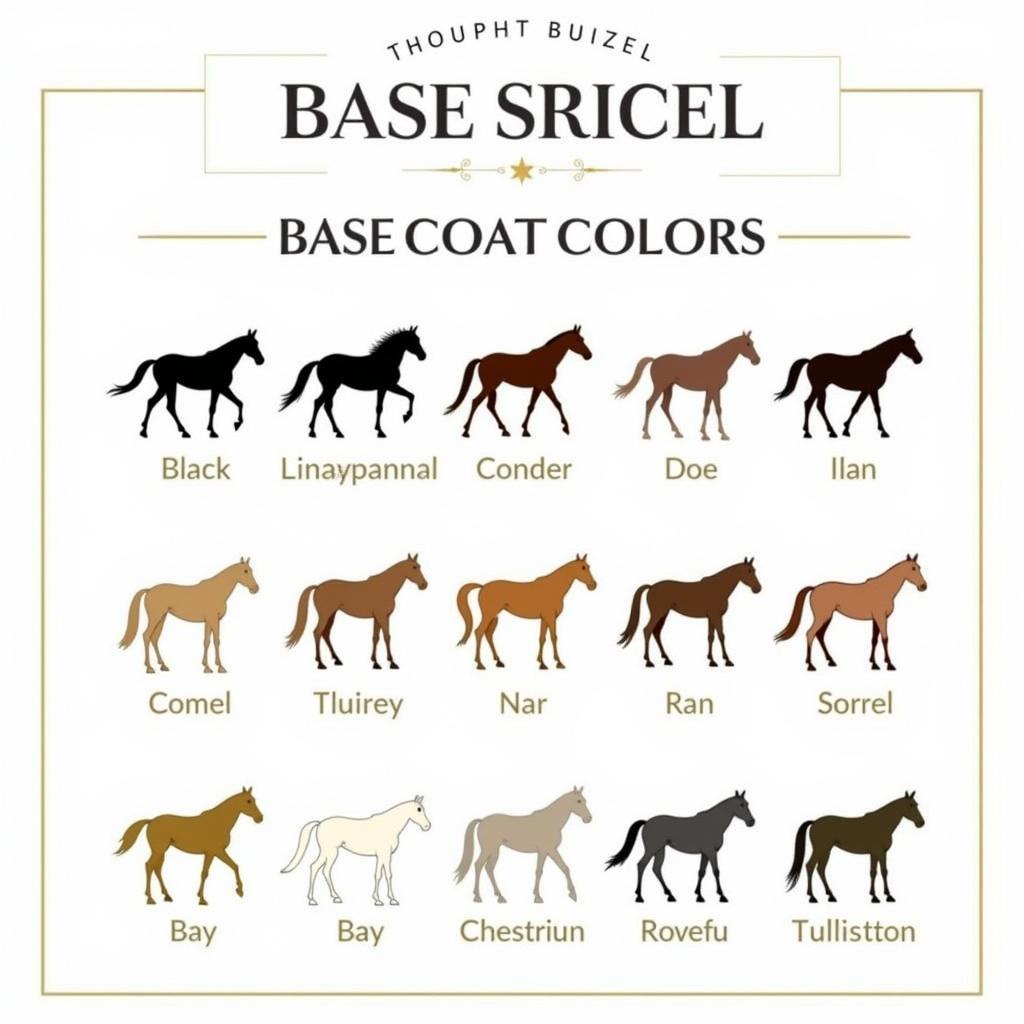Realistic Horse Coloring Pictures are more than just a fun activity; they offer a unique opportunity to delve into the fascinating world of equine coat colors and patterns. Whether you’re an artist seeking inspiration or a horse enthusiast eager to expand your knowledge, understanding the nuances of horse coloration can be incredibly rewarding.
 Realistic Horse Coloring Page
Realistic Horse Coloring Page
Decoding the Language of Equine Color
Horses boast an incredible array of coat colors and patterns, each with its own unique terminology and genetic background. Familiarizing yourself with the basic terms is key to accurately depicting these magnificent creatures.
Base Colors: The Foundation of Equine Coloration
A horse’s base coat color is the canvas upon which all other markings and patterns are painted. Some of the most common base colors include:
- Black: As the name suggests, these horses have black coats, manes, and tails.
- Bay: A rich brown body color with a black mane, tail, and points (lower legs, face, and ears).
- Chestnut: Variations of reddish-brown, from a rich liver color to a lighter, almost golden hue.
- Sorrel: Similar to chestnut, but with a lighter, more reddish tone.
 Horse Base Coat Colors Chart
Horse Base Coat Colors Chart
Beyond the Base: Exploring Markings and Patterns
Horse markings and patterns add layers of complexity and individuality to their appearance. Here are a few striking examples:
- White Markings: From small facial markings like stars and snips to larger leg markings, white patterns are common and varied.
- Dappling: This pattern features lighter, circular areas on the coat, often seen in grays and roans.
- Appaloosa Patterns: Known for their distinctive spotted coats, Appaloosas exhibit a wide range of patterns including blankets, leopards, and snowflakes.
Genetics: The Driving Force of Equine Color
The intricate world of horse coloration is driven by genetics. Genes determine a horse’s base color, as well as the presence and expression of markings and patterns. Understanding the basics of equine color genetics can deepen your appreciation for the diversity within these animals.
Tips for Creating Realistic Horse Coloring Pictures
Bringing realistic horse coloring pictures to life requires careful attention to detail. Here are a few tips to guide your artistic journey:
- Reference Images: High-quality photographs or illustrations of horses will serve as invaluable guides. Pay close attention to the way light interacts with the horse’s coat, creating highlights and shadows.
- Layer Colors: Start with the base coat color and gradually build up layers of shading and highlights. This will add depth and dimension to your artwork.
- Blend Carefully: Use blending techniques to create smooth transitions between colors, especially when depicting subtle markings and patterns.
- Embrace Variety: Experiment with different art mediums, such as colored pencils, markers, or watercolors, to find what works best for you.
Conclusion: Celebrating the Beauty of Equine Color
Realistic horse coloring pictures offer a captivating glimpse into the world of equine coloration. By understanding the basics of horse colors, patterns, and genetics, you can create artwork that reflects the true beauty and diversity of these majestic animals. So grab your coloring tools, unleash your creativity, and embark on a colorful journey into the heart of the equine world.
FAQs
1. What are the rarest horse colors?
Some of the rarest horse colors include:
- White: True white horses, as opposed to grays, are extremely rare.
- Champagne: This unique color features diluted pigmentation, resulting in a golden coat with amber eyes.
- Pearl: Another diluted color, pearl horses exhibit a light, apricot-like hue.
2. What is the difference between a bay and a brown horse?
Bay horses have black points (lower legs, mane, tail, and often facial markings), while brown horses have brown points.
3. Can a horse’s coat color change over time?
Yes, some horses, particularly grays, experience a gradual lightening of their coat color over their lifetime.
4. What are the best resources for learning more about horse colors and patterns?
Reputable breed associations, equine genetics websites, and books by equine color experts offer a wealth of information.
5. Are there any online communities for horse coloring enthusiasts?
Yes, social media platforms like Facebook and Pinterest have dedicated groups and pages where you can connect with fellow coloring enthusiasts, share your artwork, and seek inspiration.
Need Assistance?
Have questions about horses or need help with your coloring journey? Contact Justus Horses USA today!
Phone: 0772127271
Email: [email protected]
Address: QGM2+WX2, Vị Trung, Vị Thuỷ, Hậu Giang, Vietnam
Our dedicated team of horse enthusiasts is available 24/7 to assist you.
Explore More:
- Visit our website for more insightful articles on horse care, training, and breeds.
- Check out our online store for a curated selection of horse coloring books and art supplies.